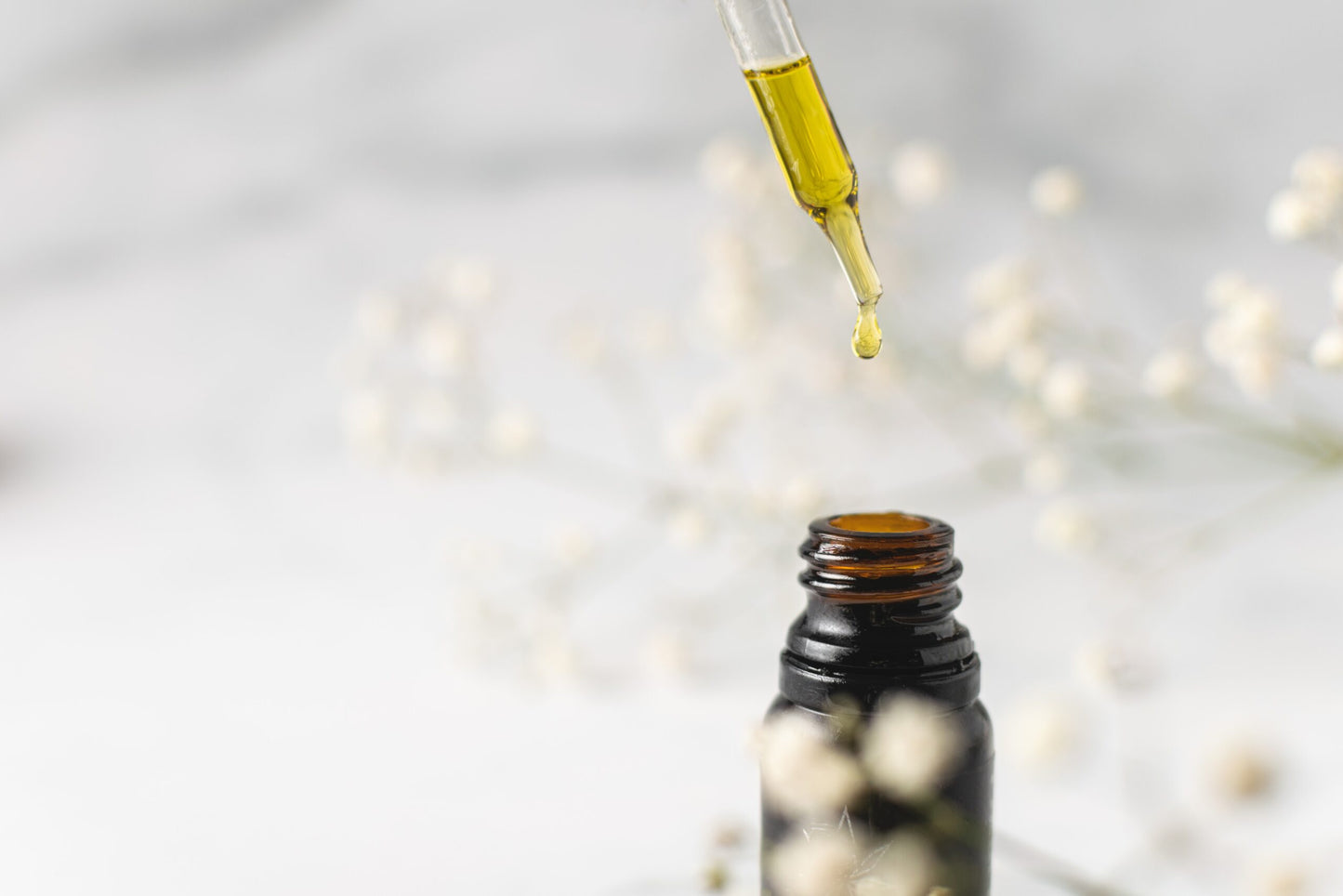
CBDA decarboxylation unlocks a new realm of potential, but the process of decarbing CBDA can be quite intricate. And the truth is, non-decarboxylated CBDA is where the real benefits are attained.
This is why we’re proud to offer the best selection of non-decarbed CBDA for sale here at Natural Dos, supporting individuals to overcome stress, anxiety, aches, and more.
Nevertheless, you’re looking to learn how to decarboxylate CBDA - and we’re here to help. We’ll explain what exactly this process entails and why some individuals try to do it, along with why you’re better off consuming CBDA in its purest form - non-decarboxylated.
What is CBDA Decarboxylation?
First things first, what is decarboxylation? This is a chemical reaction that removes a carboxyl group from a molecule and releases carbon dioxide (CO2).
In the context of cannabis, decarboxylation is a critical process that activates the cannabinoids within the plant material, transforming them from their acid form into a form that the body can more readily utilize.
When it comes to CBDA, or Cannabidiolic Acid, decarboxylation involves heating the compound. This heat exposure triggers a reaction where the CBDA molecule loses its carboxyl group (COOH) and becomes CBD (Cannabidiol).
CBD has come to be known as one of the most powerful natural healing compounds humans have at their disposal, which is where the idea of decarboxylating CBDA to get CBD is enticing.
But, more and more evidence is showing superior bioavailability in CBDA.
That being said, let’s talk about whether you should bother decarbing CBDA or not.
Why Would You Want to Decarb CBDA? Benefits of CBDA Decarboxylation and Downsides to Consider
The process of decarboxylating CBDA is a common practice in the cannabis industry. However, it's essential to understand both the benefits and the potential downsides of this transformation, especially when considering the unique properties of non-decarboxylated CBDA.
Benefits of CBDA Decarboxylation
Decarboxylation transforms CBDA into CBD, a cannabinoid renowned for its various therapeutic benefits, including potential pain relief, anti-inflammatory properties, and anxiety reduction.
This chemical change activates different properties within the compound, making CBD more interactive with the body’s endocannabinoid system.
CBD, compared to CBDA, has been more extensively researched and understood. This extensive research provides a clearer picture of its effects and potential uses, making decarboxylated products a go-to for many consumers seeking well-documented benefits.
However, you sacrifice CBDA in the process of getting CBD. So you have to ask yourself - do the benefits of CBD outweigh the loss of CBDA?
Downsides to Consider
Non-decarboxylated CBDA retains its original form and offers distinct benefits. Research indicates that CBDA may have its own unique properties, including being significantly more effective in certain contexts. Here are just a few of the CBDA oil benefits:
What’s more, CBDA is said to be substantially more bioavailable than CBD, especially when extracted through our unique process here at Natural Dos. Decarboxylation may result in the loss of these specific attributes.
Non-decarboxylated CBDA is part of the natural profile of cannabinoids found in the hemp plant. This profile is believed to contribute to the 'entourage effect,' where the combined action of hemp's compounds is more effective than isolated compounds on their own.
Decarboxylation alters this natural profile, potentially diminishing this synergistic effect. In considering this alongside everything else, we feel strongly that CBDA decarboxylation is not the best approach to consuming cannabis.
Still, we want to provide an overview of how to decarboxylate CBDA to show you how the process works. First, does CBDA take longer to decarb?
Does CBDA Take Longer to Decarb?
Decarboxylation times can vary between different cannabinoids, and this holds true when comparing CBDA to others. Here’s what you need to know…
Comparing CBDA and Other Cannabinoid Decarboxylation Times
The optimal temperature range for decarboxylating CBDA is around 110-120°C (230-248°F). The process typically takes between 30 to 45 minutes, but this can vary based on several factors.
In comparison, THCA, which decarboxylates into THC, generally requires a slightly higher temperature range, around 120-125°C (248-257°F). The time required for THCA decarboxylation can be similar to that of CBDA, but it's crucial to monitor closely to prevent degradation.
So, no - CBDA does not take longer to decarb. That being said, let’s discuss the factors influencing the CBDA decarboxylation timeline.
Factors Influencing Decarboxylation Rate
Several factors influence the rate of decarboxylation for CBDA. Understanding these is key in regards to how to decarboxylate CBDA.
- Temperature: The most critical factor is the temperature. Too low, and the process will be incomplete; too high, and it might degrade the cannabinoid, leading to a loss of potency and the development of undesirable compounds.
- Time: The duration of heat exposure is crucial. Longer exposure at the correct temperature ensures more complete decarboxylation but must be monitored to prevent degradation.
- Quality of the Cannabis Material: The initial quality of the hemp plant material can also affect decarboxylation. Fresher, well-preserved plant material may respond differently compared to older or poorly stored material.
- Method of Heating: Different heating methods (oven, slow cooker, etc.) can impact the evenness and effectiveness of the decarboxylation process.
How to Decarboxylate CBDA
We want to reiterate once again that unaltered CBDA is becoming more and more sought after for a reason. It’s more bioavailable and offers an array of benefits in its own right, making it a great component in your daily routine.
That being said, if you’re interested in how to decarboxylate CBDA strictly for educational reasons, how the process works in professional settings.
What You Need to Decarb CBDA
It all starts with high-quality, CBDA-rich hemp. The quality of your starting material can greatly affect the outcome. But what you need beyond the raw material?
- Decarboxylation Oven or Baking Sheet: A specialized decarboxylation oven is ideal, but a regular kitchen oven can also work. Just know your home is going to smell!
- Oven Thermometer: To ensure accurate temperature settings.
- Grinder: For grinding the hemp material to an even consistency.
- Parchment Paper: To line the baking sheet and prevent sticking.
- Timer: To accurately measure decarboxylation time.
Step-by-Step Guide to Decarbing CBDA
The actual process of decarbing CBDA is fairly simple and straightforward. Here’s how to decarboxylate CBDA:
- Preparation: Preheat your oven to 110-120°C (230-248°F). This temperature range is generally considered optimal for CBDA decarboxylation.
- Grind the Hemp: Use a grinder to grind the hemp material to a fine, even consistency. This increases the surface area and promotes uniform heat exposure.
- Line a Baking Sheet: Spread parchment paper on a baking sheet. This prevents sticking and makes cleanup easier.
- Spread the Hemp Evenly: Distribute the ground hemp evenly across the parchment paper. Avoid overcrowding to ensure even heat distribution.
- Decarboxylate: Place the baking sheet in the oven and set a timer. The process usually takes about 30 to 45 minutes, but this can vary based on your oven and the specific material.
- Monitor the Process: Check periodically to ensure that the hemp is not overheating. An oven thermometer is helpful for monitoring the actual temperature inside the oven.
- Cool Down: Once the time is up, remove the baking sheet from the oven. Allow the material to cool down before handling. The hemp should appear slightly browned and dried out.
- Store Properly: Store the decarboxylated hemp in an airtight container in a cool, dark place to preserve its potency.
At this point, all CBDA should have been converted to CBD - for better or worse. Because as we said from the start, CBDA decarboxylation alters the unique properties that make products like ours so special.
We’ll talk about what you can do with decarbed CBDA shortly, but here are a few safety considerations to keep in mind.
Safety Considerations
There is always risk involved when working with heat, so take measures to protect yourself from burns. Beyond that, its a good idea to maintain ample ventilation in the space to let strong odors and fumes escape.
Remember, overheating can degrade cannabinoids and terpenes. The oven must be monitored carefully from start to finish.
Now What?
Actually decarbing CBDA is just the first step. Now, you have to prepare it even further to actually reap the benefits it has to offer. Infuse it into oils or butters for culinary creations, blend into topical creams for skincare, or simply encapsulate it for easy consumption.
For longevity, store your decarboxylated CBD in an airtight container, away from direct sunlight and heat. A cool, dark place like a cupboard is ideal. Proper storage ensures the preservation of its potency and effectiveness for an extended period.
Now, before we bring our guide on CBDA decarboxylation to a close, we do want to invite you to experience the power of CBDA on its own and give it a chance. We’re confident you’ll agree that keeping this unique cannabinoid in its purest form is the way to go!
Enjoy CBDA in its Purest Form and Experience All the Benefits it Has to Offer at Natural Dos!
CBDA outshines its counterpart, CBD, in potency and effectiveness with its remarkable absorption rate. Whether you’re looking to squash anxiety and stress or you want relief from aches and pains, Natural Dos is your trusted source for the highest-quality CBDA oil products.
Our products, ranging from delightful CBDA gummies, calming CBDA capsules, refreshing CBDA mints and potent CBDA tinctures, are designed to fit seamlessly into your daily routine, offering a natural path to alleviate stress, anxiety, and sleeplessness.
Rigorously tested for purity and backed by science, our CBDA formulations are the pinnacle of innovation and sustainability. Join the Natural Dos community today and step into a healthier, more balanced life with our premium CBDA offerings today!
Final Thoughts on How to Decarboxylate CBDA
While CBDA decarboxylation activates certain properties of CBD, it's important to remember that non-decarboxylated CBDA possesses its own unique benefits.
With its superior bioavailability and effectiveness in areas such as stress and anxiety relief, non-decarboxylated CBDA offers a compelling alternative, retaining the natural essence of the hemp plant.
Natural Dos stands at the forefront of harnessing these benefits, offering high-quality, non-decarboxylated CBDA products.
Choose the natural potency of CBDA at Natural Dos, where we prioritize the original, unaltered power of this remarkable cannabinoid for your optimal well-being. With a 100-day money-back guarantee, you’ve got nothing to lose!
